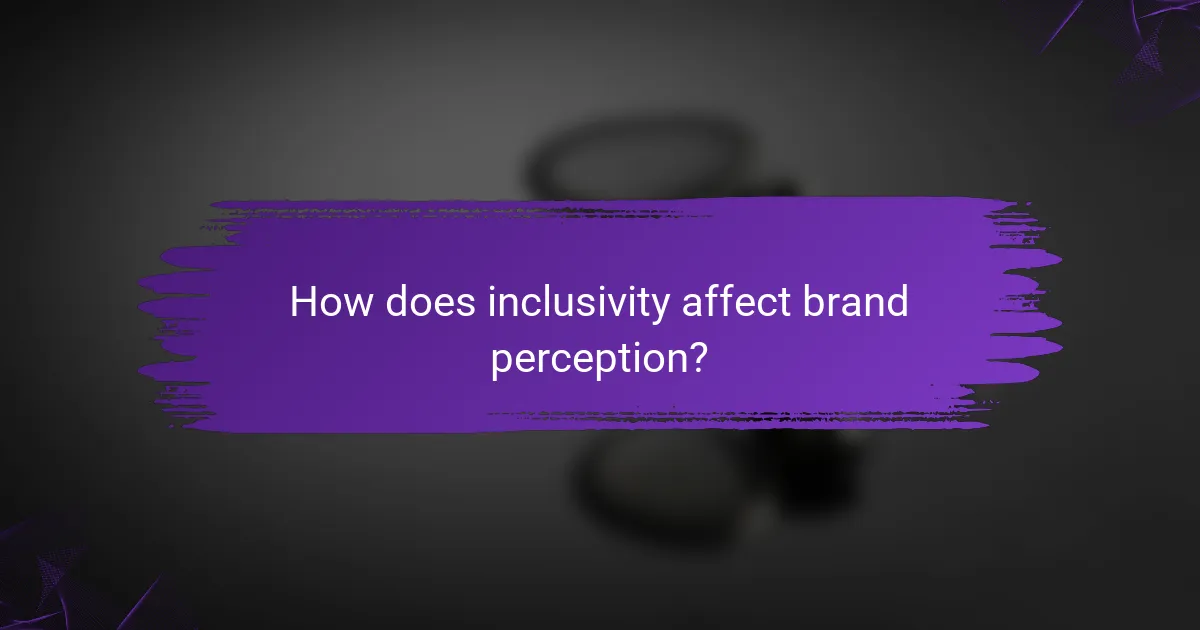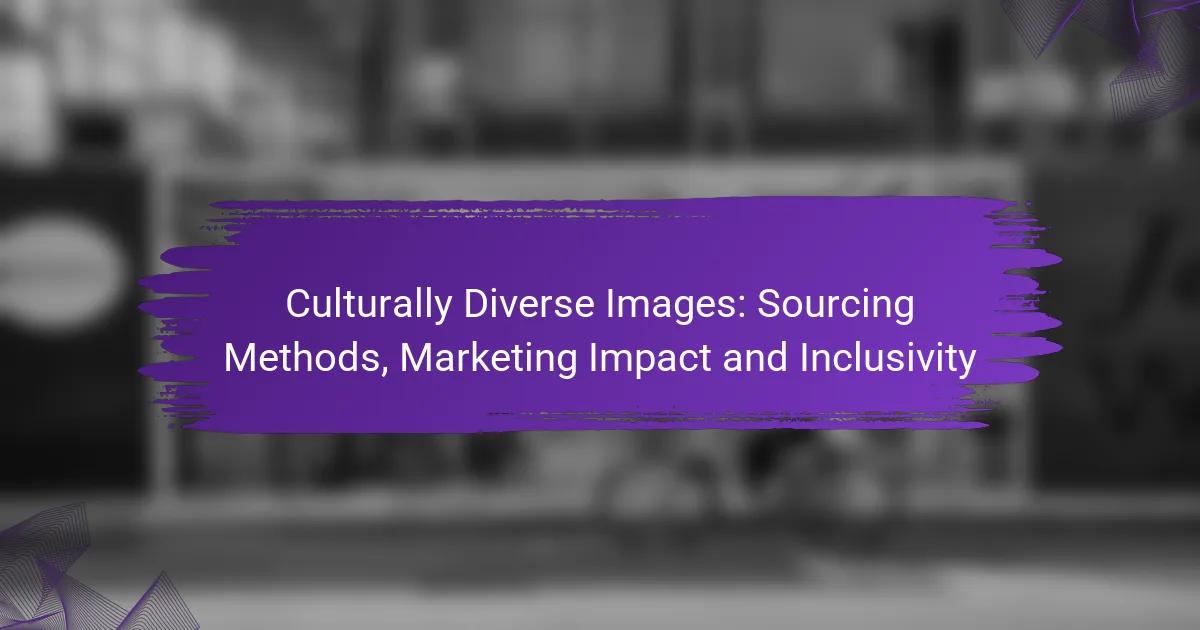Sourcing culturally diverse images is essential for brands aiming to connect authentically with a wide range of audiences. By leveraging various platforms and collaborating with local artists, marketers can find imagery that not only represents inclusivity but also enhances brand perception and drives engagement. Emphasizing diversity in marketing strategies fosters a sense of belonging, ultimately leading to improved trust and sales among diverse consumer groups.

How to source culturally diverse images in the US?
Sourcing culturally diverse images in the US involves utilizing various platforms and methods that prioritize inclusivity and representation. By exploring stock photo platforms, community-driven repositories, and collaborations with local artists, you can find authentic imagery that resonates with diverse audiences.
Stock photo platforms like Shutterstock
Stock photo platforms such as Shutterstock offer a vast array of culturally diverse images that can be easily licensed for various uses. When searching, use specific keywords related to the cultures you want to represent, and filter results by ethnicity, activity, or setting to find images that fit your needs.
Consider subscription plans or pay-per-image options based on your budget. While these platforms provide convenience, be aware of licensing agreements to ensure compliance with usage rights.
Community-driven image repositories
Community-driven image repositories like Unsplash and Pexels allow users to upload and share images, often featuring diverse perspectives. These platforms can be a goldmine for authentic, culturally rich visuals that are free to use, although attribution may be required.
When using these repositories, look for collections or tags that highlight cultural themes. This can help you discover images that align with your project’s goals while supporting community artists.
Partnerships with local artists
Forming partnerships with local artists is an effective way to source culturally diverse images that reflect genuine experiences and narratives. Collaborating with artists from various backgrounds can lead to unique content that resonates more deeply with specific communities.
To establish these partnerships, consider reaching out through local art organizations, social media, or community events. Be clear about your project’s goals and how you plan to use the images, ensuring that artists are fairly compensated for their work.

What is the marketing impact of using diverse images?
Using diverse images in marketing significantly enhances audience connection and brand perception. This approach not only reflects inclusivity but also resonates with a broader demographic, ultimately driving engagement and sales.
Increased audience engagement
Diverse images can capture the attention of various audience segments, making them feel represented and valued. When consumers see themselves reflected in marketing materials, they are more likely to engage with the content, whether through likes, shares, or comments.
To maximize engagement, brands should consider using images that reflect the cultural backgrounds and lifestyles of their target audience. This can lead to higher interaction rates on social media platforms and increased time spent on websites.
Enhanced brand reputation
Incorporating diverse imagery can significantly improve a brand’s reputation by showcasing its commitment to inclusivity and social responsibility. Brands that prioritize representation are often viewed more favorably by consumers, which can lead to increased loyalty and trust.
To build a strong reputation, brands should ensure that their diverse imagery is authentic and not merely a marketing gimmick. Collaborating with diverse creators and communities can provide genuine representation and strengthen brand credibility.
Higher conversion rates
Utilizing diverse images can lead to higher conversion rates as consumers are more likely to purchase from brands that reflect their values and identities. When potential customers see relatable imagery, they may feel a stronger emotional connection, which can influence their buying decisions.
To enhance conversion rates, brands should test different diverse images in their marketing campaigns. A/B testing can help identify which images resonate most with specific audience segments, leading to more effective marketing strategies and improved sales outcomes.

How does inclusivity affect brand perception?
Inclusivity significantly enhances brand perception by fostering a sense of belonging among diverse consumer groups. Brands that prioritize inclusive representation often see improved trust and engagement from their audiences.
Positive consumer sentiment
When brands showcase diverse images and narratives, they resonate more deeply with consumers from various backgrounds. This connection can lead to heightened positive sentiment, as customers feel recognized and valued. For instance, brands that feature multicultural models in their advertising often receive favorable feedback, reflecting an appreciation for representation.
Stronger customer loyalty
Inclusivity can cultivate stronger customer loyalty, as consumers are more likely to remain loyal to brands that reflect their values and identities. Brands that actively promote diversity in their marketing efforts can create a loyal customer base that feels a personal connection. This loyalty can translate into repeat purchases and long-term relationships, enhancing overall brand equity.
Broader market reach
By embracing inclusivity, brands can tap into broader market segments, reaching diverse demographics that may have been previously overlooked. This expanded reach not only increases potential sales but also enhances brand visibility in various communities. For example, a brand that markets its products with culturally relevant imagery can attract customers from different ethnic backgrounds, ultimately driving growth.

What criteria should be considered for image selection?
When selecting culturally diverse images, consider relevance to the target audience, authenticity of representation, and quality and resolution. These criteria ensure that the images resonate with viewers and accurately reflect the diversity intended.
Relevance to target audience
Images should align with the interests and identities of the target audience. Understanding the demographics, cultural backgrounds, and preferences of your audience can guide the selection process. For example, using images that feature individuals from specific cultural groups can enhance relatability and engagement.
Conducting audience research through surveys or social media insights can help identify which types of images are most appealing. This targeted approach can lead to a more effective marketing strategy and improved audience connection.
Authenticity of representation
Authenticity is crucial in representing diverse cultures accurately. Avoid stereotypes and ensure that images depict individuals in genuine contexts that reflect their culture. This can involve using images from local photographers or communities to capture true cultural elements.
Consider collaborating with cultural consultants or community members during the selection process. Their insights can help ensure that the images chosen are respectful and representative, fostering a sense of trust and credibility with the audience.
Quality and resolution
The quality and resolution of images significantly impact their effectiveness. High-resolution images are essential for maintaining visual clarity across various platforms, whether on websites, social media, or print materials. Aim for images that are at least 300 DPI for print and 72 DPI for digital use.
Additionally, assess the composition and lighting of images. Well-composed images with good lighting not only attract attention but also convey professionalism. Regularly review and update your image library to ensure that all visuals meet current quality standards.

What are the challenges in sourcing diverse images?
Sourcing diverse images presents challenges such as limited availability of authentic representations and the risk of cultural misinterpretations. These obstacles can hinder effective marketing and inclusivity efforts.
Limited availability of authentic representations
Finding authentic representations of diverse cultures can be difficult due to a lack of access to high-quality images that accurately reflect those communities. Many stock photo libraries may not offer a wide range of images that showcase the richness and variety of different cultures.
To overcome this, consider collaborating with local photographers or artists who understand the cultural nuances. This approach not only enriches your image library but also supports local talent and promotes authenticity.
Potential cultural misinterpretations
Cultural misinterpretations can occur when images are used without a proper understanding of their context. This can lead to stereotypes or reinforce negative perceptions, which can damage brand reputation and alienate audiences.
To mitigate this risk, conduct thorough research on the cultures you aim to represent. Engage with community members or cultural consultants to ensure that the images used are respectful and accurately depict the intended message.
